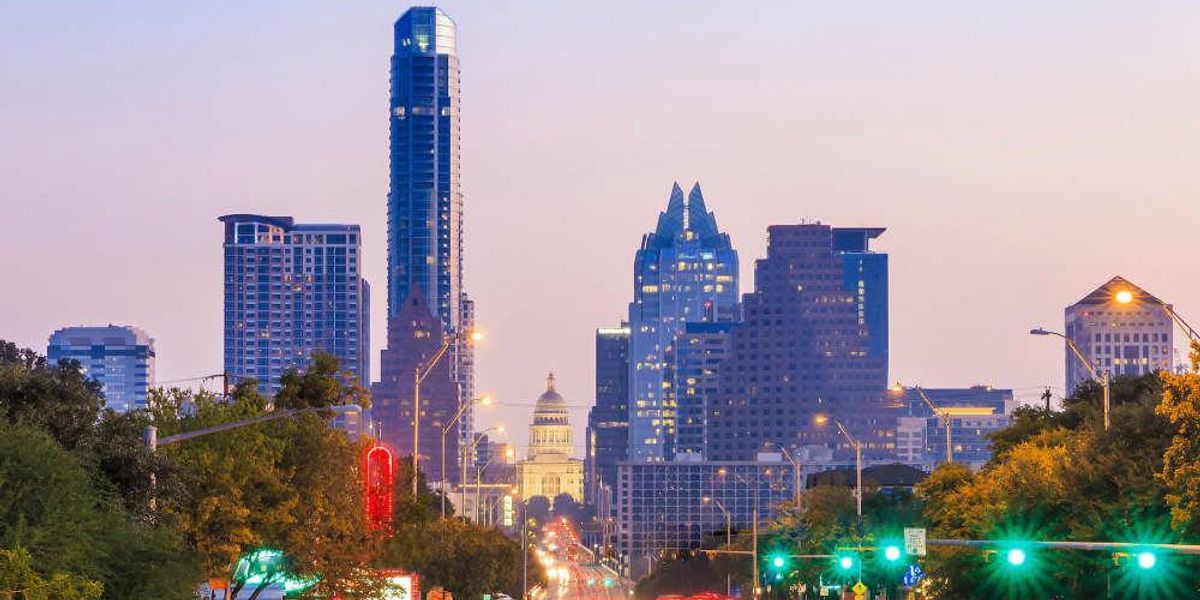Predictions show Austin-area population could overtake San Antonio by 2040
No one can look into a crystal ball and tell us what the population of the Austin metropolitan area will be in two decades. The predictions of professional tipsters, however, give us a pretty good idea.
A CultureMap analysis of the most recent population projections from the Texas Water Development Board, a government agency that helps manage the state’s water supply, shows the Austin area could enter stunning territory by 2040. The analysis indicates the population of the Austin metropolitan area will surpass the population of the now larger San Antonio metropolitan area in just 18 years.
Based on the water board county-by-county outlook for texas, the population of the Austin Five Counties Area will reach 3,340,450 in 2040. In comparison, the population of the San Antonio Eight Counties Area will reach 3,285,451 in 2040, according to the outlook. Some officials, including Austin Mayor Steve Adler, believe the Austin and San Antonio areas are merging into a “metroplex” like Dallas-Fort Worth.
To put these numbers into perspective, the current population of the San Diego metropolitan area in Southern California is approximately 3.3 million, making it the 17th largest metro area in the nation. Today, San Antonio ranks 24th among US metros, with Austin four spots behind at 28th.
Adam Perdue, a research economist at Texas A&M University’s Texas Real Estate Research Center, says the prediction that the Austin-area population will overtake the San Antonio-area population by 2040 is “reasonable “.
“Austin’s population growth over the past three decades has been much faster than San Antonio’s. What makes this prediction difficult is that San Antonio’s growth has been somewhat flat while Austin’s higher growth rate is moderating,” Perdue said.
Perdue wonders if the Austin Metro can sustain its higher growth rate, given its “current growing pains.” However, he says, the Austin Metro has outperformed other major metros in the state over the past two years in housing permits issued per capita. This housing growth “bodes well” for the Austin-overtaking-San Antonio scenario, he notes.
Water board forecasts show the San Antonio area will be even larger than the Austin area in 2030 – 2,928,335 from 2,814,237. But by 2040, the two areas will switch positions, according to board projections. At this point, Austin would be the third-largest metro area in the state, and San Antonio would sit at No. 4.
Dallas-Fort Worth is the largest metro in the state and is expected to remain in that position for decades. The Houston area will almost certainly remain the second largest metro in the state for the near and distant future.
In 2021, the population of the San Antonio area was estimated at 2,601,788, compared to 2,352,426 for the Austin area. If the water board’s predictions come true, this population gap would narrow by 2030 and Austin would overtake San Antonio by 2040.
In 2050, 2060 and 2070, the demographic divide between the Austin and San Antonio areas is expected to widen, according to figures from the Water Board. The agency predicts that the Austin-area population will top 5 million by 2070 (5,088,247, to be precise), compared to San Antonio’s 4,253,684.
These numbers do not take into account the possibility of the federal government adding counties to the Austin metro area or the San Antonio metro area based on updated US Census Bureau numbers.
The federal government defines a metropolitan area as “a central area containing a significant population core, together with adjacent communities having a high degree of economic and social integration with that core”. Thus, if the federal government determined that a county that now lies outside of the Austin or San Antonio metropolitan area had become more economically and socially integrated, it could attach that county to what is currently the Greater Austin area. Austin to five counties or the San Antonio area to eight counties.


Comments are closed.